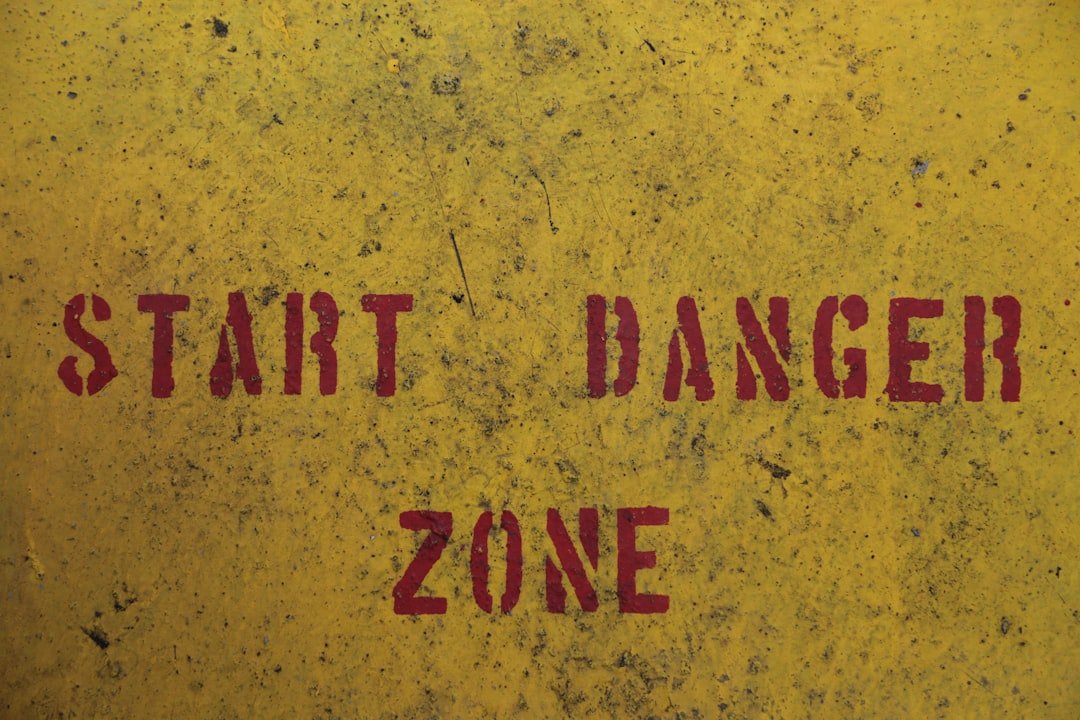
Streamline Your Business Processes with a Comprehensive Business Object Repository
In today’s digital age, businesses are generating and managing vast amounts of data. This data is often stored in various systems and applications, making it difficult to access and utilize effectively. This is where a business object repository comes into play. A business object repository is a centralized database that stores and manages all the business objects used within an organization. It provides a single source of truth for these objects, ensuring consistency and accuracy across different systems and applications.
Having a centralized repository for business objects is crucial for several reasons. Firstly, it improves data quality and consistency. By storing all business objects in one place, organizations can ensure that the data is accurate, up-to-date, and consistent across different systems. This eliminates the risk of data discrepancies and improves overall data integrity.
Secondly, a business object repository increases efficiency and productivity. With all business objects readily available in one place, employees can easily access the information they need without wasting time searching through multiple systems. This streamlines processes and allows employees to focus on more value-added tasks.
Lastly, a business object repository enables better decision-making. By providing a comprehensive view of all business objects, organizations can make informed decisions based on accurate and reliable data. This leads to better strategic planning and improved business outcomes.
Key Takeaways
- A Business Object Repository is a centralized database that stores and manages all business objects used by an organization.
- A comprehensive Business Object Repository can improve data quality, consistency, and efficiency in business processes.
- Key considerations for creating a Business Object Repository include defining data standards, establishing governance, and selecting the right technology.
- Implementing a Business Object Repository involves identifying and mapping business objects, designing data models, and testing and validating the repository.
- Common challenges in building and maintaining a Business Object Repository include data silos, lack of governance, and resistance to change.
What is a Business Object Repository and How Does it Work?
A business object repository is a centralized database that stores and manages all the business objects used within an organization. But what exactly are business objects? In simple terms, business objects are the key entities or concepts that represent the core elements of a business. They can be anything from customers, products, orders, invoices, to employees.
A business object repository works by storing these business objects in a structured manner. Each object is defined by its attributes or properties, which describe its characteristics or qualities. For example, a customer object may have attributes such as name, address, phone number, and email.
There are different types of business object repositories, depending on the organization’s needs and requirements. Some repositories are designed for specific industries or domains, while others are more generic and can be customized to fit any business. Additionally, there are on-premises repositories that are hosted within the organization’s infrastructure, as well as cloud-based repositories that are hosted on external servers.
Benefits of a Comprehensive Business Object Repository for Your Business
Implementing a comprehensive business object repository can bring numerous benefits to your organization. Here are some of the key advantages:
1. Improved data quality and consistency: By centralizing all business objects in one repository, organizations can ensure that the data is accurate, up-to-date, and consistent across different systems. This eliminates the risk of data discrepancies and improves overall data integrity.
2. Increased efficiency and productivity: With all business objects readily available in one place, employees can easily access the information they need without wasting time searching through multiple systems. This streamlines processes and allows employees to focus on more value-added tasks.
3. Better decision-making: A business object repository provides a comprehensive view of all business objects, enabling organizations to make informed decisions based on accurate and reliable data. This leads to better strategic planning and improved business outcomes.
4. Reduced risk and improved compliance: By centralizing and standardizing data in a business object repository, organizations can reduce the risk of data breaches and ensure compliance with regulatory requirements. This is especially important in industries such as finance, healthcare, and government.
Creating a Business Object Repository: Key Considerations and Best Practices
| Topic | Description |
|---|---|
| Business Object Repository | A centralized storage location for business objects that can be accessed by multiple applications and systems. |
| Key Considerations | 1. Define the scope of the repository 2. Determine the data model 3. Establish data governance policies 4. Plan for scalability and performance 5. Ensure security and access control |
| Best Practices | 1. Use a standardized data model 2. Implement version control 3. Establish a change management process 4. Provide documentation and training 5. Monitor and optimize performance |
Building a business object repository requires careful planning and consideration. Here are some key considerations and best practices to keep in mind:
1. Identifying business objects: The first step in creating a business object repository is to identify the key business objects that need to be stored and managed. This involves understanding the organization’s processes, systems, and data requirements.
2. Defining metadata: Metadata is the information that describes the attributes and properties of each business object. It provides context and meaning to the data. It is important to define metadata standards and guidelines to ensure consistency and accuracy.
3. Establishing governance and ownership: It is crucial to establish clear governance and ownership of the business object repository. This includes defining roles and responsibilities, establishing data stewardship programs, and implementing data governance policies.
4. Ensuring scalability and flexibility: As the organization grows and evolves, the business object repository needs to be able to scale and adapt to changing needs. It is important to choose a repository that can handle large volumes of data and support future enhancements.
How to Implement a Business Object Repository: Step-by-Step Guide
Implementing a business object repository involves several steps. Here is a step-by-step guide to help you get started:
1. Define your requirements: Start by defining your business requirements and objectives for the repository. This includes identifying the key business objects, their attributes, and any specific functionalities or features you need.
2. Choose a repository solution: Research and evaluate different repository solutions that meet your requirements. Consider factors such as scalability, flexibility, ease of use, integration capabilities, and cost.
3. Design the repository structure: Once you have chosen a repository solution, design the structure of your repository. This involves defining the entities, attributes, relationships, and hierarchies of your business objects.
4. Implement the repository: Set up the repository according to your design. This includes creating the necessary tables, fields, and relationships in the database.
5. Populate the repository: Import or migrate your existing data into the repository. This may involve data cleansing, transformation, and validation processes.
6. Test and validate: Test the repository to ensure that it is functioning correctly and that the data is accurate and consistent. Validate the data against your business rules and requirements.
7. Train and educate users: Provide training and education to users on how to use the repository effectively. This includes teaching them how to search, retrieve, and update data in the repository.
8. Monitor and maintain: Regularly monitor and maintain the repository to ensure data quality, consistency, and security. This includes performing data backups, implementing security measures, and resolving any issues or errors that arise.
Common Challenges in Building and Maintaining a Business Object Repository
Building and maintaining a business object repository can be challenging. Here are some common challenges you may encounter:
1. Lack of governance and ownership: Without clear governance and ownership, it can be difficult to ensure data quality, consistency, and security. It is important to establish clear roles and responsibilities and implement data stewardship programs.
2. Inadequate metadata management: Metadata is crucial for understanding the context and meaning of the data in the repository. Inadequate metadata management can lead to confusion, inconsistency, and poor decision-making.
3. Poor data quality and consistency: Data quality is a critical factor in the success of a business object repository. Poor data quality can lead to inaccurate reporting, inefficient processes, and poor decision-making.
4. Lack of scalability and flexibility: As the organization grows and evolves, the business object repository needs to be able to scale and adapt to changing needs. It is important to choose a repository solution that can handle large volumes of data and support future enhancements.
Tips for Ensuring Data Quality and Consistency in Your Business Object Repository
Ensuring data quality and consistency is crucial for the success of your business object repository. Here are some tips to help you achieve this:
1. Data profiling and cleansing: Before importing or migrating your data into the repository, perform data profiling to identify any inconsistencies or errors. Cleanse the data by removing duplicates, correcting errors, and standardizing formats.
2. Data validation and verification: Implement data validation rules and checks to ensure that the data being entered into the repository is accurate and complete. Verify the data against your business rules and requirements.
3. Data enrichment and normalization: Enrich your data by adding additional information or attributes that provide more context and meaning. Normalize your data by standardizing formats, units of measurement, and naming conventions.
Integrating Your Business Object Repository with Other Systems and Applications
Integrating your business object repository with other systems and applications is crucial for maximizing its value. Here are some key considerations and best practices for integration:
1. Importance of integration: Integration allows for seamless data flow between different systems and applications, ensuring consistency and accuracy across the organization. It eliminates the need for manual data entry and reduces the risk of errors.
2. Integration approaches and best practices: There are different approaches to integration, such as point-to-point integration, middleware-based integration, and service-oriented architecture (SOA). Choose the approach that best fits your organization’s needs and requirements.
3. Tools and technologies for integration: There are various tools and technologies available for integration, such as enterprise service buses (ESBs), application programming interfaces (APIs), and data integration platforms. Choose the tools that best fit your organization’s technology stack.
Maximizing the Value of Your Business Object Repository: Use Cases and Examples
A business object repository can bring value to various industries and domains. Here are some use cases and examples:
1. Finance industry: A bank can use a business object repository to store customer information, account details, transactions, and other financial data. This allows for better customer relationship management, risk assessment, and regulatory compliance.
2. Healthcare industry: A hospital can use a business object repository to store patient records, medical history, test results, and treatment plans. This enables better patient care coordination, clinical decision support, and research.
3. Manufacturing industry: A manufacturing company can use a business object repository to store product specifications, inventory data, production schedules, and quality control information. This improves supply chain management, production planning, and product traceability.
Moving Forward with Your Business Object Repository Strategy
In conclusion, a business object repository is a centralized database that stores and manages all the business objects used within an organization. It provides a single source of truth for these objects, ensuring consistency and accuracy across different systems and applications.
Implementing a comprehensive business object repository can bring numerous benefits to your organization, including improved data quality and consistency, increased efficiency and productivity, better decision-making, and reduced risk and improved compliance.
Building and maintaining a business object repository requires careful planning and consideration. It is important to identify the key business objects, define metadata standards, establish governance and ownership, and ensure scalability and flexibility.
By following best practices and implementing a step-by-step approach, you can successfully implement a business object repository that meets your organization’s needs and requirements. With proper data quality management and integration with other systems and applications, you can maximize the value of your repository and drive better business outcomes.
If you’re interested in learning more about business object repositories and their importance in streamlining data management, you might find this article from Wave Magnets insightful. They delve into the benefits of using a business object repository and how it can enhance your organization’s efficiency. Check out their article here to gain a deeper understanding of this essential tool for businesses.
FAQs
What is a Business Object Repository?
A Business Object Repository is a centralized database that stores and manages all the business objects used in an organization. It provides a single source of truth for all the business objects and ensures consistency across different applications.
What are Business Objects?
Business Objects are the key entities or concepts that are used in an organization to represent real-world objects such as customers, products, orders, etc. They are used to store and manage data related to these objects and are used across different applications.
What are the benefits of using a Business Object Repository?
Using a Business Object Repository provides several benefits such as improved data consistency, reduced redundancy, increased reusability, and improved data quality. It also helps in reducing development time and costs by providing a single source of truth for all the business objects.
What are the different types of Business Object Repositories?
There are two types of Business Object Repositories – Physical and Logical. Physical Business Object Repositories store the actual data related to the business objects, while Logical Business Object Repositories store the metadata related to the business objects.
What are the key features of a Business Object Repository?
The key features of a Business Object Repository include data modeling, data mapping, data validation, data transformation, data integration, and data governance. It also provides a user-friendly interface for managing and accessing the business objects.
What are the best practices for implementing a Business Object Repository?
The best practices for implementing a Business Object Repository include defining a clear data model, establishing data governance policies, ensuring data quality, providing a user-friendly interface, and integrating the repository with other applications. It is also important to involve all stakeholders in the implementation process.


















